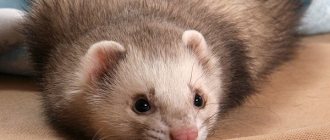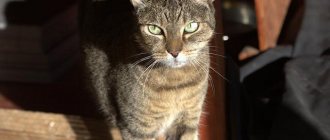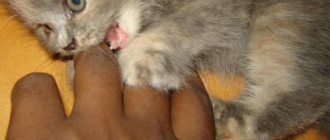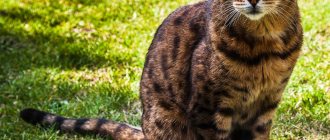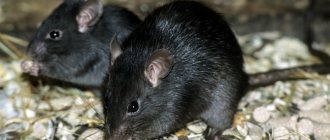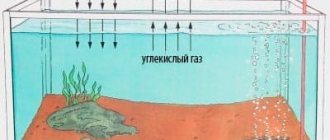Ecology
Arthropods have an internal skeleton, a segmented body, and several limbs. There is a great variety of arthropods, a group that includes insects, arachnids and crustaceans. While some people consider many of them to be disgusting pests, others keep them in their homes as pets.
Collecting rare insects, spiders or centipedes may seem like a fun hobby to some. There are many forums on the Internet dedicated to how to care for these exotic pets and where they can be easily purchased. However, not all of them are kept in apartments legally, and if they are raised in captivity, they cannot be released into the wild. We invite you to learn about the most common “pets” such as arthropods.
1) Stick insects
Stick insects or leaf beetles are herbivorous insects that live in the crown of trees, on branches or bushes. In total, this order includes about 2,500 different species. They are somewhat longer and thinner than mantises, but are often confused with praying mantises.
These wingless insects undergo three life stages: in the fall, the female lays many eggs in different places, the larvae hatch from them in the spring and become adults by summer. Females can give birth without the presence of males, and the children will simply become her clones. Insects manage to hide using amazing camouflage: they look like the twigs or twigs on which they sit, and even imitate their color.
They are easy to care for at home. You just need to mimic their natural habitat with the right level of humidity, temperature and food. They can be picked up and carried, they are not aggressive, but they are very fragile, so they should be handled with extreme care. They can be left alone in the aquarium for a week without any problems.
Butterflies
A fragile, graceful insect that attracts with its bright color and unique pattern. The animal can live up to 2 years. The structure consists of two parts: the body, which is covered with a chitinous shell, and the wings. The butterfly's eyes occupy most of the head. With the help of antennae, the insect navigates in space and senses odors. The bright coloring of the animal serves as camouflage, which allows the insect to blend in with its environment.
Keeping an insect is not expensive. The butterfly’s home at home is a glass jar or plastic container. The pet eats the juice of rotten fruits and a mixture of honey and water.
So, insects are a great pet option. They are not fussy about food and care, do not take up much space in the house, do not become dirty and do not require serious financial outlays for maintenance.
2) Mantises
Praying mantises get their name from their long, spiny forelimbs, which are bent like our arms when we pray. With the help of these limbs, the mantis strikes, grabs prey and holds it during a meal. They are predators, feeding on other insects and are sometimes even seen engaging in cannibalism.
In autumn, praying mantises lay eggs in layers in special capsules, which are covered with hardening and waterproof foam. This form of oviposition is called ootheca. In the spring, tiny praying mantises that have not been eaten by their siblings or other insects climb onto branches and undergo several metamorphoses until they reach maturity. At the last stage they acquire wings.
Mantises are often kept at home because they are interesting to watch. They are easy to feed, they are quite aggressive and quickly grab the offered food. There are a large number of different types of praying mantises on sale, of all sizes.
The largest is Ischnomantis gigas
- reaches a length of up to 16.5 centimeters, and the smallest -
Bolbe pyhmaea
- is only about 1 centimeter in length. It is known that females eat males during mating, but this does not always happen, especially if the female has been properly fed before, she will not kill her partner.
3) Cockroaches
Many people treat cockroaches very disdainfully and consider them pests, but only 5 out of four thousand species of cockroaches live at home. Cockroaches easily adapt to new conditions, although they like warmer environments. They are mostly omnivores, but some species eat exclusively wood.
These insects are very fast and hardy and can live without food for a long time, and without air for up to 45 minutes! You can put them in water and they will remain alive for half an hour. It is believed that cockroaches can survive even after a nuclear disaster and they definitely have a higher level of resistance to radiation than humans. As household pests, cockroaches carry dangerous bacteria and can cause allergic reactions.
Some types of cockroaches are kept as pets. They are very colorful, funny and easy to feed. There are many beautiful types on the market. Perhaps the most famous species is the Madagascar hissing cockroach.
.
Death's Head
cockroach has a skull design on the top of its head.
There is no difficulty in feeding. You can grind up dry dog food or buy special cockroach food online. It is also useful to irrigate the walls of the aquarium with a spray bottle, as insects love to lick off droplets of water. Some of them are good climbers, even on smooth glass walls, so care must be taken to prevent them from escaping.
You can handle cockroaches, but you must wash your hands thoroughly afterward. Breeding cockroaches in captivity is easy, you just need to keep the female and male in the same aquarium, and soon the offspring will be born. Cockroaches of the species Blaptica dubia
used to feed other insects.
4) Beetles
There are more than 350 thousand species of beetles in the world that live in different parts of the world - in deserts, tropics and even in water. Some are pests that eat crops, others feed on pests such as spiders or mites.
Some of the beetles are very useful, as they destroy carrion and dung. Some of them are food for other insects, birds and animals. The beetles lay eggs that hatch into larvae, which in some cases take years to become adult insects. Adults, as a rule, do not live long.
Hollow beetles, which are called “rhinoceros beetles,”
. They have horns in the area of the pronotum. They reach a length of up to 15 centimeters and sometimes weigh about 80 grams. Often these beetles are used for gambling, forcing them to fight each other using the warlike habits of the males.
Goliath beetles are one of the largest insects, reaching a length of 5-7 centimeters and weighing 80-110 grams. These beetles belong to the lamellar
, which includes other beautiful and colorful beetles. Beetles are more difficult to find at the market, but you can first take the larva, which, however, will spend most of its time buried in the ground. But if you are patient, a charming pet will be born.
Description of domestic insects
To prepare for destruction, you should consider representatives of the main species often found in human homes. If you understand what types of domestic insects there are, why they are born, and what they eat, it will be easier to fight them. Living conditions attract moths, ants, flies, silverfish, woodlice and borers.
More about moths
In human homes you can find different representatives of this species:
- Fur moth
- Clothes
- Food.
The clothes pest destroys wardrobe items made of natural and semi-synthetic material. The preferred food of the fur moth is natural fur and wool.
Food brethren grind off cereals and other groceries. An adult may not feed at all, but the young generation after emerging from the cocoon poses the greatest danger. This means that it is the larvae that destroy supplies, spoil clothes, and flying insects do not pose a danger, they only lay eggs.
Woodlice
Officially they represent a group of crustaceans, but are often called insects. Woodlice can live on the first floors of apartment buildings, next to a source of dampness and moisture (basement). In their lifestyle, these pests are more similar to cockroaches. Representatives of the rough woodlice species are found much more often in apartments.
As you can guess from the name, pests need the main source of life - water. This means that it is easier to deal with them; you just need to block access to moisture. These creatures pose a danger to stocks of vegetables and plant shoots.
Grinder beetle
It attacks wood materials without being noticed. It should be clarified that the damage is caused by the insect larvae, and not by the beetle itself. Almost the entire tree is damaged. The insect gnaws through it, forming long passages. However, pests do not scratch the surface, thereby creating the illusion of the integrity of a piece of furniture or wooden structure. At one stage of development, the larvae pupate, which usually occurs in areas immediately under the bark. Then the beetles appear.
butterfly fly
These insects are more common in the home where you can access the sewer system. This means they inhabit bathrooms and toilets. The development of larvae occurs in sewers and garbage. Flies are small in size, with the wings being much larger than the body. This is the main criterion by which house flies differ from butterflies.
Ants
Representatives of two varieties can live on the territory of a human house/apartment: the pharaoh ant (also known as the brownie ant), and the thief ant. The fight against them is usually ineffective, since insects establish nests in different areas, which are sometimes located outside the apartment. Ants cause damage to food and are a source of pathogenic microbes. To destroy these insects in an apartment, you need to act together with your neighbors.
Silverfish
They can appear in places with high levels of humidity, where it is also quite dark. Insects do not pose a serious danger, although they feed on grocery products. Representatives of the sugar variety of silverfish love sugar. However, the diet is based on organic scales, which pests find in dust deposits in cracks, on the floor, and baseboards. They crawl out of hiding at night.
5) Ants
Ants live everywhere. They can be predators, scavengers or herbivores. They are very social and live in large groups in which a strict hierarchy is observed. The colony is led by the queen, the only fertile female. Other females that do not produce offspring are workers or soldiers.
They communicate using pheromones, sounds or touch and defend themselves by biting and stinging. They have large jaws with which they bite painfully. Ants are relatives of bees and wasps. Some of them, such as harvester ants, are sold as food for toad lizards.
Harvester ants are also sold for so-called "ant farms", a fun hobby for children and adults. These farms are flat boxes with glass where you can observe the behavior of ants during their daily activities, for example, you can see how they build tunnels and carry food.
They should be fed fruits, vegetables, seeds or the whites of boiled eggs. Special ant food is sold online. Using a pipette, you can add water to one area, but only a little, because they may drown. It is interesting to watch the work of a team of these funny insects. It's even more interesting to see how they care for their young, but queen ants are not always available for sale, so you should catch one.
6) Labiopods
Animals of the labiopod group are quite aggressive and very fast. They live in both the tropics and deserts. They hunt at night and eat cockroaches, crickets, mice and even bats. If disturbed, they can bite or pinch, moreover, they are poisonous. They have flat bodies and one pair of legs per body segment. Labiopods can reach a length of up to 25 centimeters. There are more than 8 thousand different species.
Keeping these animals at home is not so easy. First, everything possible should be done to prevent them from running away. They can eat their own kind, so you need to keep each individual separately. Some of them live more than 10 years in the wild, and even longer in captivity. Even though they live in deserts, they require a dark, damp environment with plenty of places to hide.
These creatures can molt 7 to 10 times before they become mature. Usually the female is larger than the male and has a different color. If you have a creature like a scolopendra
, better not take it in your hands.
Blood-sucking parasites
If the food source is human/pet blood, then you need to look for a bedbug, louse or flea. Such insects are called parasites.
Flea
Rarely bites humans, as it lives on the body of animals. However, under certain circumstances it can attack a person, only bites are isolated. Such parasites in an apartment are a source of serious diseases, as they carry pathogenic microbes. They should be destroyed as a whole: on animals, in the apartment.
Bed bug
These are parasites that live next to humans, as they feed on blood. While there are few of them, they are invisible. As the colony population increases, infestation of the apartment becomes obvious. Parasites are distinguished by their brown color, flattened body and small size. You can meet them everywhere if they have already spread widely, but only at night. However, with a moderate infestation, bedbugs are often found next to the owner's bed.
Lice
There are head, body, and pubic types of insects. In the first case, parasites inhabit the human head and are there constantly. Pubic lice live on the genitals.
Clothes pests live on clothes, but feed on human blood. It is noteworthy that representatives of each variety can be found only on the corresponding parts of the body.
Interesting video: All about insects living in your home
7) Centipedes
Unlike labiopods, centipedes have long, round bodies, are slow-moving, and feed on decaying plants. They also have 2 pairs of legs on each segment, one opposite the other. Centipedes have between 36 and 100 legs, depending on the species. In total there are about 10 thousand known species.
Millipedes burrow into the ground, some of them secrete poison through their skin, which mammals lick off, using it as medicine. When threatened, centipedes curl up into a ball and do not bite at all.
Centipedes are easy to keep indoors and can live in groups. Giant African centipede Archispirostreptus gigas
is a popular domestic animal that reaches up to 25 centimeters in length. They are not aggressive and live long.
Millipedes eat fruits or vegetables and need extra calcium to help them moult. They love moisture, live under plant debris and need deep soil to burrow into. Since they are nocturnal animals, they will not show much during the day, so you should think carefully about all the disadvantages before bringing such a creature into your home.
They breed easily, so if you would like them to have offspring, keep males and females together at all times. They are not aggressive, but can cause allergic reactions due to the discharge, so you should be very careful with them.
Types of domestic insects: photos
The species described above mainly harm products and things, but there are also insects that, in addition to household damage, also cause harm to humans. We are talking about biting parasites. The types of such domestic insects are shown in the photo below, along with a description of their key characteristics.
Cockroaches
- They may be red or black depending on the species.
- The size of red cockroaches is from 0.8 to 1.3 centimeters, the size of black ones is from 1.8 to 3 centimeters.
- They feed on human food and need water.
- Most often found in the kitchen.
- They can bite children anywhere on the body due to their delicate skin; adults - mainly in the face and neck area.
Bed bugs
- Bedbugs have a round, flattened body measuring from 0.4 to 1 centimeter in diameter.
- Color varies from red to dark brown and almost black.
- They feed only on the blood of people and domestic animals.
- Active mainly at night, hiding during the day.
- They leave behind a characteristic brown mud in places where they accumulate.
Fleas
- Fleas look like small, mobile black, brown or tan dots.
- Insects move by jumping over distances of up to 2 meters.
- They feed only on the blood of people and animals.
- Active around the clock.
- They do not live in organized colonies, but always appear en masse.
The first signals of the appearance of carnivorous parasites in the house may not be their physical presence at all, but bites. What do domestic insect bites look like on humans and how do they differ from each other?
 Hermit crabs
Hermit crabs
Hermit crabs live in mollusk shells and, as they grow, change their homes to larger ones. The largest species can live from 30 to 70 years and even more. They are excellent climbers and diggers and are interesting to watch.
Some types of hermit crabs live underwater, others live on land. Most aquatic species live in salt water, while those that live on land must travel to the sea to reproduce.
These animals come in a variety of colors, such as red, brown, or purple, and have a variety of body patterns, including specks, spots, or stripes. They are omnivores, either scavenging or eating dead animals or plants.
Hermit crabs are popular pets. They need free space, a certain substrate, fresh or salt water, food, additional shells and some objects on which they can climb. If you want your pet cancer to feel good, you should take into account all the nuances.
Types of small beetles and their characteristics
Very small brown or black pests can often appear in the kitchen. Among them, skin beetles and flour beetles are more common. Some common beetles in a residential apartment are a type of skin beetle, for example, the bread borer. All these insects have an individual set of feeding habits.
Bread grinder
It is characterized by small size (on average 1.75-3 mm), color – brown. These little bugs can eat a variety of foods, but prefer flour products. In the absence of other food, dried fruits, dried herbs, books, and grains are affected. The larvae cause irreparable harm, since the food they have visited cannot be eaten. Adults do not feed, but make tunnels in grain products and other food.
Flour beetle
There are different types of domestic insects. Among them is another small pest – the flour beetle. The size is slightly larger – up to 5 mm. This is a pest that lives in the kitchen and appears in cereals, flour, and bran. Color – brown with a red tint. Sometimes Khrushchak bugs are called red bugs.
Carpet beetle
It is represented by different types, each of which harms certain objects and products. It can be a fur coat beetle, a carpet beetle, or a bread grinder. If things made from natural materials are damaged in the house: fur, leather, there is a high probability that there is a fur pest. Representatives of the carpet species live, accordingly, in the carpet. The bread grinder destroys food.
9) Scorpios
Scorpions are predators that eat insects. They sting their prey, paralyzing it, before eating it. There are more than 2 thousand known species of scorpions, about 30 have poison that can kill a person. Scorpions grow from 0.7 to 23 centimeters in length, have 8 legs, 2 claws and can vary in size depending on the species. The poisonous sting is located at the very tip of the segmented tail curled upward.
Emperor scorpion of the species Pandinus imperator
, perhaps the most popular species among those who like to keep scorpions at home. These animals are black in color with large claws that can grow up to 15 centimeters. You should provide them with conditions where they can burrow and hide somewhere, you also need to give them cockroaches or crickets, provide the right temperature and humidity, and place a shallow container of water.
These scorpions live from 6 to 8 years and should not be handled, even though their venom is not as dangerous as that of some other species. You can keep several individuals together, as long as there is enough space for them and there are enough secret corners. Since they are nocturnal, they are more interesting to watch at night.
Domestic insects in the apartment: photos and names
If you have domestic insects in your apartment, photos and names of some of the most common pests, as well as key features of their life activity, may help you determine which particular parasite you have. Conventionally, these insects can be divided into 2 groups: those that do not bite, and those that bite people and domestic animals. The first category includes various types of moths, leather beetles and small brown bugs.
Mole
- The moth looks like a butterfly; the adult is shaped like a paper airplane.
- In an apartment, he can eat either bulk foods and groceries, or natural fabrics, wool and leather.
- The color of the back of the clothes moth is uniform, from pale yellow to light beige.
- The color of the back of the food moth is gray-brown, the body seems to be divided into two parts by color, the front is lighter than the back.
- The body length, depending on the species, reaches 0.5–1.5 centimeters.
Carpet beetles
- Carpet beetles look like round beetles with 6 legs and antennae.
- In apartments, the ham skin beetle feeds on dried and dried meat, smoked meats, natural leather, and pasta.
- The ham skin beetle has a rectangular body with rounded corners up to 1 centimeter long.
- The fur coat beetle, which feeds on fur, wool, down and feathers, has an average size of 0.5 to 0.8 millimeters.
- The color of the back of the fur coat beetle is black, with gray spots at the base of the head, the color of the back of the ham leather beetle is dark brown, with a stripe across the body several shades lighter.
Little brown bugs
- Under this definition, as a rule, one of 3 types of insects is hidden: the carpet beetle, the Suriname mucoed beetle, or the small tobacco grinder beetle.
- The sizes of all three insects vary between 1–3.5 millimeters.
- The carpet beetle feeds on cotton, paper, wool and other natural materials; there are mustaches on the head with thickenings at the ends.
- The Surinamese flour eater eats flour and confectionery products, dried fruits and nuts; the body is divided into three parts, the mustache is long, divided into segments, as if jagged.
- The small tobacco borer beetle eats paper, cotton, silk, cocoa and cereals; the body is covered with light hairs.
10) Tarantula spiders
These spiders come in a variety of color combinations and temperaments, so there are plenty to choose from. Some of them have stripes like tigers, others are marked with a skeleton. Most of them are covered with hair.
These spiders are found in America, Africa, Asia and Australia. African and Asian tarantula spiders have strong venom and are more aggressive than those that live in America. They eat almost everything that moves - from grasshoppers to mice. Some of them live in trees, others on the ground in burrows.
These creatures are easy to find at the pet market. They vary in size and can range from the size of a fingernail to a dinner plate. In a fenced area of the required size, digging spiders will dig holes, covering the entrance with cobwebs.
Feeding these spiders can be very interesting. Throw a live grasshopper or cockroach into the aquarium and the spider will catch it. The largest ones can be fed with mice or rats, but experts do not advise doing this, as rodents can harm the spider.
Large cockroaches will be excellent food for spiders. Some tarantulas can go a long time without food when they are simply not hungry or are about to moult. They shed the top layer, and it seems that the spider has split into two.
During molting, spiders lie on their backs and shed old skin, which after molting looks like another whole spider. You should not feed them for several days after molting, as the spider is very vulnerable, you should allow its fangs to harden.

